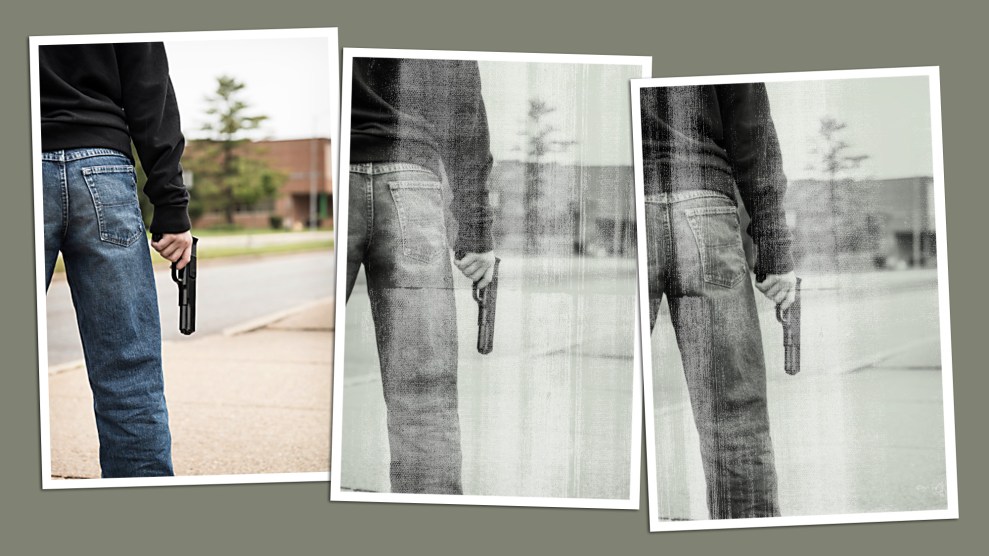
El Paso residents mourn victims of the mass shooting at a shopping center.John Locher/AP
A weekend of mass shootings in El Paso, Texas, and Dayton, Ohio, left at least 29 dead, dozens injured, and countless grieving Americans.
In recent years, Mother Jones has made it a newsroom priority to investigate the scourge of gun violence and mass shootings. Amid sensational details and inevitable politicking in the wake of the devastating weekend, here are some big-picture Mother Jones investigations to help you understand the background dynamics of these twin tragedies:
Mass shootings have become deadlier
Sunday’s shooting in Dayton was the 114th mass shooting since 1982, according to Mother Jones’ open-source mass shootings database. As Mother Jones noted in 2014, “An analysis of this database by researchers at Harvard University, further corroborated by a different study from the FBI, determined that mass shootings have tripled in frequency in recent years.” When the shootings do occur, they’re more deadly: The five deadliest mass shootings have all occurred since 2007.
Gun violence is horrific—and expensive
In addition to devastating communities, gun violence (which includes, but is not limited to, mass shootings) is very expensive, costing the United States some $229 billion in 2012, according to another award-winning Mother Jones investigation. That price tag includes “direct costs,” like money spent on emergency services, police investigations, medical care, and prison for the perpetrator. About 87 percent of these costs fall on taxpayers. It also includes “indirect” costs, like lost income, losses to employers, and impact on quality of life. Watch how we tallied the numbers, below:
The copycat effect is real
Mass shooters are often inspired by news of other mass killings. “When real life for these individuals is so blighted in terms of love and work, they turn to the anti-heroes,” Reid Meloy, a forensic psychologist at the University of California-San Diego and a leading researcher on targeted violence, told Mother Jones in 2015. “They don’t just want to be like them—they are envious and want to one-up them,” Meloy explained.
Mother Jones found stark evidence of the “Columbine effect”: The nation’s deadliest high school massacre inspired at least 74 plots and attacks across 30 states as of 2015. According to the investigation, Columbine copycats’ goals “ranged from attacking on the anniversary of Columbine to outdoing the original body count. Law enforcement stopped 53 of these plots before anyone was harmed. Twenty-one of them evolved into attacks, with a total of 89 victims killed, 126 injured, and nine perpetrators committing suicide.” Our follow-up investigation published in April found that the problem has continued to grow in the two decades since the 1999 high school tragedy in Colorado.
Media can help—and hurt
Today, mass shooters often express their motives and desire for fame in manifestos posted online. “They do this to claim credit and to articulate the grievance behind the attack,” Andre Simons, who led an FBI team assisting local authorities in heading off violent attacks, told Mother Jones in 2015. “And we believe they do it to heighten the media attention that will be given to them, the infamy and notoriety they believe they’ll derive from the event,” he added.
When it comes to covering mass shootings, the media should stick to some basic guidelines: Keep the perpetrator’s name out of the headlines, minimize images of the perpetrator, report on the perpetrator dispassionately (e.g. avoid terms like “lone wolf”), and avoid publishing material from perpetrators’ videos or manifestos except when it has clear journalistic value that is in the public interest.
Check out more of our reporting
Here are some highlights from our extensive reporting on mass shootings and other gun violence:













